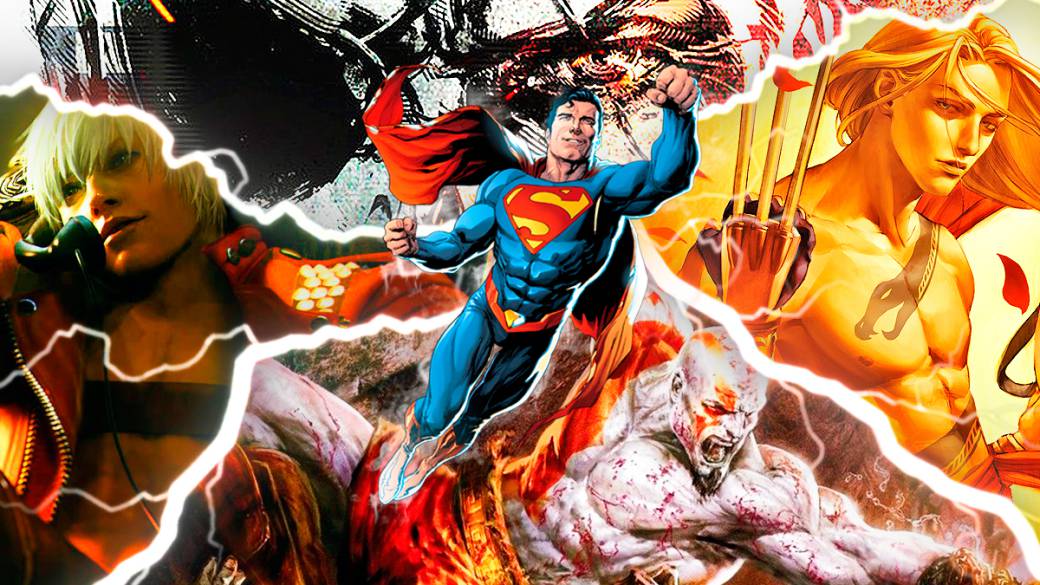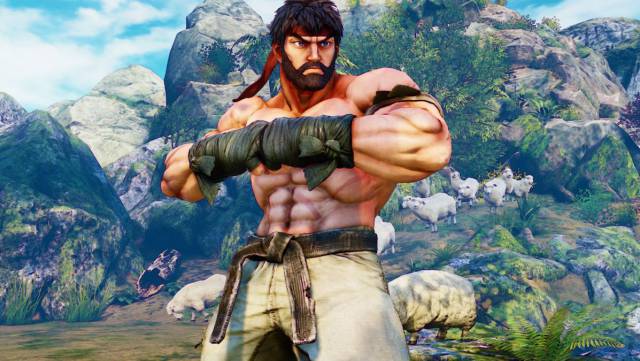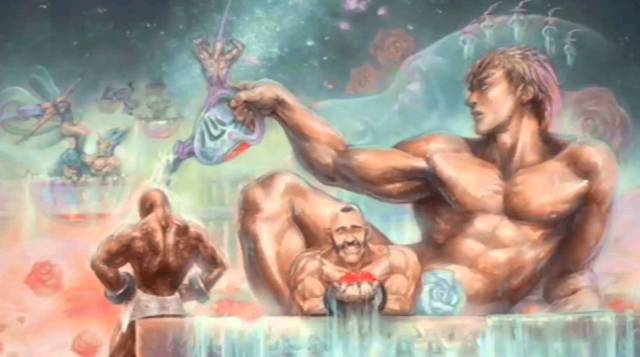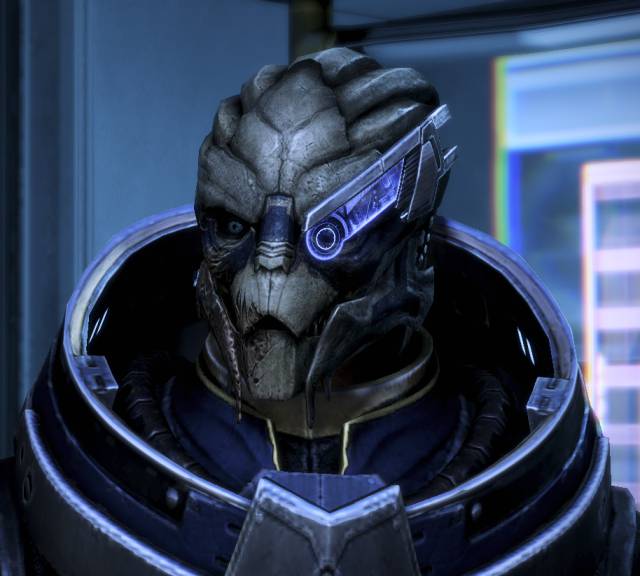
Beyond emphasizing muscles, the erotic appeal of male characters in video games has been explored from different perspectives.
When exploring the narrative of video games, the sex of one of the most taboo subjects. His exploration in video games has been approached from different perspectives, as designer Brenda Romero has studied in her essay Sex in Video Games: from the game's aesthetics itself, through the implementation of eroticism in its mechanics or as a way of rewarding the player. We have also enjoyed games that have explored eroticism from a positive perspective, so we have been ashamed of so many disturbing scenes that were meant to be exciting.
In the framework of the representation of eroticism in video games, we observe how the sexualization of characters is one of the most common assets when it comes to attracting the player's interest or rewarding him for his virtual exploits. Rivers of ink have been written about the reification of women in favor of seeking the audiovisual pleasure of an audience that is assumed to be masculine and heterosexual. Film critic Laura Mulvey, in her essay Visual Pleasure and Narrative Cinema, coats the term “masculine gaze” to define the representation of women from a masculine and voyeuristic perspective: The spectator, both masculine and feminine, is invited to obtain pleasure through how the woman is represented as an object of desire: "Her appearance is so encoded to cause a powerful visual and erotic impact that we can discuss how it alters the very connotation of being perceived." In the same essay, Mulvey talks about how women themselves have learned to see and value themselves from this masculine perspective.
Sexualization from the homoerotic perspective
Video games are no stranger to sexualization as a mechanism for writing, presenting and narrating characters. The masculine gaze has been debated in different media, as well as the feminine representation and how this affects the perception of reality of the spectators. In The Mary Sue it is exposed how a distortion of the image of women has been created: “Let's be clear, it is young men who internalize these images about women's bodies. They have been fed a strict diet of hypersexualized women in the media for so long that some even rebel at the slightest questioning of it, not to mention their reactions to attempts to change things. Think of the responses from most male fans when a woman's body is changed in a video game, be it Mortal Kombat or Final Fantasy. They feel that these games are uniquely theirs and that by making them more inclusive or realistic they are being robbed of something. ”
Video game critic Kate Cox discusses the mechanisms of female sexualization in her essay The Gamer Gaze, beyond superficial biases and misconceptions. Likewise, it also addresses a counter-argument that is usually used when the debate on female representation arises: What about sexualized men? Sometimes sexualization is erroneously measured by the amount of clothing a character wears, although other factors influence it, such as the role of the camera in directing the player's gaze. Cox presents the shower scenes in Heavy Rain as an example: while Madison's recreates showing us her body at different angles, Ethan's is much shorter and, in this case, the camera shows her nude in a more concise way and restrained.
 Hot Ryu, the skin that became an Internet meme by showing the protagonist of Street Fighter from a more sensual perspective.
Hot Ryu, the skin that became an Internet meme by showing the protagonist of Street Fighter from a more sensual perspective.
The representation of male beauty in video games, on the other hand, is subject to a series of certain beauty canons: muscular and / or athletic bodies, many of them idealized and shown with a naked torso. However, the presentation of these same characters, according to Cox, seeks to inspire in the player a feeling of power, which is not at odds with the erotic desire that it may awaken. Criticism compares the most classic poses of characters like Ezio, Superman and Solid Snake, and points to a common denominator in their body language: from firmness, they transmit security and strength. Mattie Brice, in her essay On Men’s Sexualization in Video Games, analyzes why it is not enough to show a muscular man to sexualize him: “What we consider as erotic parts of the body and how they are exposed in the media helps us how to portray sexualized men. Female breasts are considered erotic in many cultures (and to varying degrees), and that is where the laws that prohibit women from exposing them in public come from. If the male chest and arms evoked the same sexual focus, they would be in the same situation. However, it should be noted that it is legal and expected that women partially expose their breasts, despite their sexual connotation. This is where the starting point of female sexualization is born: emphasize what is illegal and improper to show in public without going over the line. The only taboo area in men is under his belt, so the male chest and arms do not threaten anyone's sexuality. So male sexualization would go by putting the emphasis and focus on your charms in a similar way to how we do it in women: take them out in underwear and low-waisted pants, or tight pants that enhance the bulge and shape of the rear, etc. As this violates the masculine gaze, so internalized in us, we would consider this idea very uncomfortable. However, the media targeting gay men already exploit this technique. And, since male sexualization only appears in a homoerotic context, it is not surprising to see it so absent in video games ”.
Mattie herself cites two titles as examples of male sexualization from a homoerotic perspective: Cho Aniki and Muscle March, both of which show half-naked men in bold poses. On the other hand, the author explains how the humorous tone of the game creates a context in which the player, instead of fantasizing about these characters, perceives them as a parody.

Subjects and objects of desire
However, the only way to sexualize a man in a video game is by enhancing his body from the waist down? Is gay erotic cinema the only reference when it comes to exploring masculine appeal? In digital entertainment we observe new ways to explore the sensuality of men, beyond applying the homoerotic perspective. Just as we find erotic myths like Lara Croft, who has transcended popular culture, we also observe male characters whose appeal has aroused passions among the public. The Gameinatrix website, aimed at the players, carried out a survey among their readers so that they would choose the most desired knights among pixel worlds: Dante (Devil May Cry) was established with the first position, followed by Auron (Final Fantasy X) , Sam Fischer and Solid Snake. The beauty of the demon hunter goes beyond the exoticism provided by his white hair, or by his athletic figure. His charisma lies in his impudence and elegance, and both Capcom and Ninja Theory have exploited his erotic potential: in Devil May Cry 3 he dispensed with a T-shirt – not his iconic red coat – while Ninja Theory presented him partially nude in one of the first scenes of the game.
Likewise, in the Japanese otome, aimed at the female audience, we observe the ideal of the bishonen: young men with a sublime, delicate and androgynous beauty, which seeks to incite the players to pursue a virtual romance with them. In turn, it is very common to reproduce the fantasy of the reverse harem, in which a female protagonist is surrounded by several highly desirable suitors. The bishonen is also found in titles of other genres, as we observe in Vaan from Final Fantasy XII or in Sephiroth (Final Fantasy VII).
 Vaan, archetype of bishonen
Vaan, archetype of bishonen
Journalist Dante Douglas, in Paste Magazine, analyzes three models of male sexualization, which he classifies as power fantasy, gender performance, and fan interpretation. The power fantasy is based on the archetype of the rough and wild barbarian. The author quotes Kratos from God of War, whom he describes as "a textbook-worthy example of what power fantasy is," and it is that the aggressiveness exuded by the Spartan is accompanied by a certain sexual energy that can present as attractive to a certain audience. “Within the lore of the game, he is considered sexy. This is implicit in the numerous sexual encounters he has throughout the game, and in how other women want it (…). However, it is Kratos' own will in the game that keeps him from being an object of desire, something that is not seen in so many examples of free female sexualization. Kratos is presented as a fantasy of power, as an aspirational figure. His sexuality does not seek the viewer's pleasure in seeing Kratos in an erotic context, but serves as an avatar of the player's power within the game universe; sex becomes another kingdom that Kratos can conquer. Any type of sexual objectivization that can be applied to it is totally annulled by its stoic hypermasculinity and position within the game: it is the main figure with whom we interact, the most important, created for the story to progress. This is the main problem that many games face when it comes to drawing the male lead as a sex object. In many cases, this manifests as a fusion of power fantasy and sexual fantasy, resulting in a mass of muscles with no personality. ”
Regarding sexualization as gender perfomativity, Douglas talks about how sensuality has been constructed as a uniquely feminine value, while traditional virility opposes all the characteristics that make a woman erotically attractive. So, when writing a sensual male character, one ends up opting for the reproduction of female stereotypes: “Male characters traditionally configured as sexy are so through their vanity and fondness for fashion. Thus, her sensuality is based on her ability to act as an object of desire, which is usually written from a queer perspective or treated as a joke. The thing is, when we objectify male bodies, or treat them as objects of desire, we challenge gender conventions. ” Under this definition, which includes the bishonen, Douglas places characters such as Vega from Street Fighter or Maxi and Raphael from Soul Calibur. Raiden (Metal Gear), could be included under this category.
 Kratos, protagonist of God of War, is a sexual subject framed under the fantasy of power.
Kratos, protagonist of God of War, is a sexual subject framed under the fantasy of power.
In the sexualization played by the fan, we find male characters in whom, despite not having been conceived under an erotic connotation, they have awakened the fantasies of the community, manifested through fan-arts, such as the portrait of Leon Kennedy done by illustrator Antocullen in which it is shown as a pin-up model. Also, we find secondary characters like Garrus Vakarian (Mass Effect); Dorian Pavus (Dragon Age: Inquisition) or Hancock (Fallout 4) who, despite not fitting into the aesthetic canons, have become highly desired knights by women and men. Douglas analyzes a characteristic shared between this type of characters, very opposed to the qualities that the main hero usually displays: they are personable, charming and emotionally open characters. “Masculinity in video games is more linked to interaction than to the performance of the character himself. Since we associate normative masculinity with power, and with the power we exercise over our environment, it is frankly difficult to make such a protagonist sexy. His limitations are hard to find, and his personality is only seen through his interactions with other characters. "
All in all, beauty sells and it is inevitable to be inclined towards characters that are attractive and / or sensual to us. However, exploring how the sex appeal of the characters is drawn is one more way to delve into creativity to open the doors to a greater variety of characters, both male and female, whose charm is not only reduced to the amount of skin that they teach not even its erotic value.
 Garrus Vakarian, far from human aesthetic canons, is one of the most desired characters in video games.
Garrus Vakarian, far from human aesthetic canons, is one of the most desired characters in video games.
